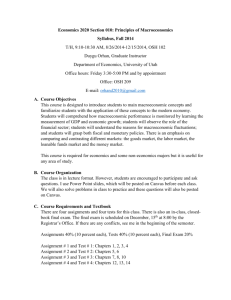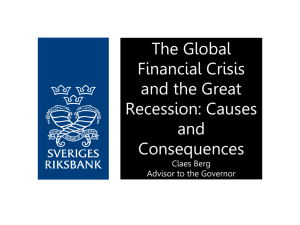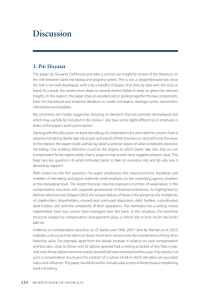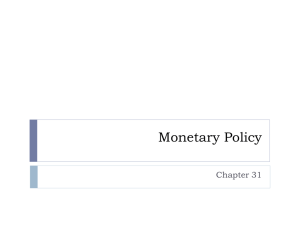EFIAH Lesson 7b - Foundation for Teaching Economics
advertisement
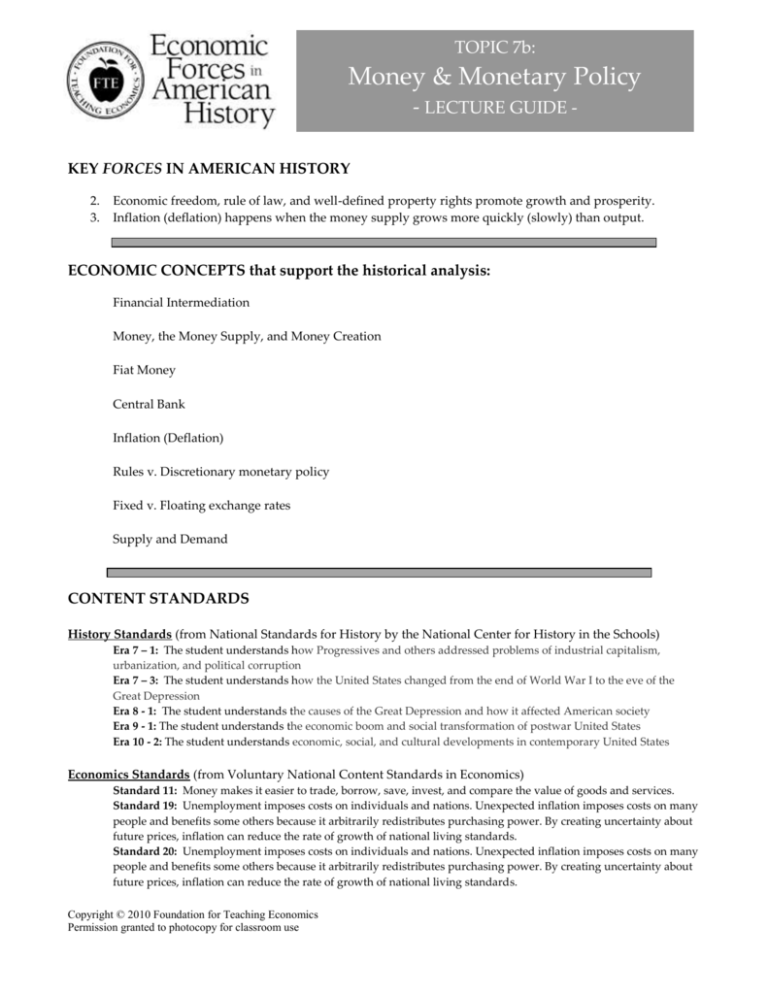
TOPIC 7b: Money & Monetary Policy - LECTURE GUIDE KEY FORCES IN AMERICAN HISTORY 2. 3. Economic freedom, rule of law, and well-defined property rights promote growth and prosperity. Inflation (deflation) happens when the money supply grows more quickly (slowly) than output. ECONOMIC CONCEPTS that support the historical analysis: Financial Intermediation Money, the Money Supply, and Money Creation Fiat Money Central Bank Inflation (Deflation) Rules v. Discretionary monetary policy Fixed v. Floating exchange rates Supply and Demand CONTENT STANDARDS History Standards (from National Standards for History by the National Center for History in the Schools) Era 7 – 1: The student understands how Progressives and others addressed problems of industrial capitalism, urbanization, and political corruption Era 7 – 3: The student understands how the United States changed from the end of World War I to the eve of the Great Depression Era 8 - 1: The student understands the causes of the Great Depression and how it affected American society Era 9 - 1: The student understands the economic boom and social transformation of postwar United States Era 10 - 2: The student understands economic, social, and cultural developments in contemporary United States Economics Standards (from Voluntary National Content Standards in Economics) Standard 11: Money makes it easier to trade, borrow, save, invest, and compare the value of goods and services. Standard 19: Unemployment imposes costs on individuals and nations. Unexpected inflation imposes costs on many people and benefits some others because it arbitrarily redistributes purchasing power. By creating uncertainty about future prices, inflation can reduce the rate of growth of national living standards. Standard 20: Unemployment imposes costs on individuals and nations. Unexpected inflation imposes costs on many people and benefits some others because it arbitrarily redistributes purchasing power. By creating uncertainty about future prices, inflation can reduce the rate of growth of national living standards. Copyright © 2010 Foundation for Teaching Economics Permission granted to photocopy for classroom use TOPIC 7b: Money & Monetary Policy - LECTURE GUIDE - KEY IDEAS Central banks perform two functions: They serve as “lenders of last resort” – i.e. they provide liquidity to the banking system during a crisis (they are the bankers’ bank); and through the regulation of the commercial banks, central banks control the money supply, and hence they exert influence on inflation (deflation) and interest rates. If central banks allow the money supply to expand more quickly (slowly) than real output, then inflation (deflation) is often the result. Central banks (or whatever government entity controls them) must decide whether they will follow a monetary rule or a discretionary monetary policy. A monetary rule – e.g. gold standard – makes it difficult, though not necessarily impossible, for the monetary authorities to exercise discretion in controlling the money supply, influencing interest rates, and so forth. A discretionary policy, often associated with fiat currencies, gives the monetary authority much more latitude in controlling the money supply, influencing interest rates, and so forth. Central bank independence is often a feature of countries that experience economic growth and prosperity. Copyright © 2010 Foundation for Teaching Economics Permission granted to photocopy for classroom use







